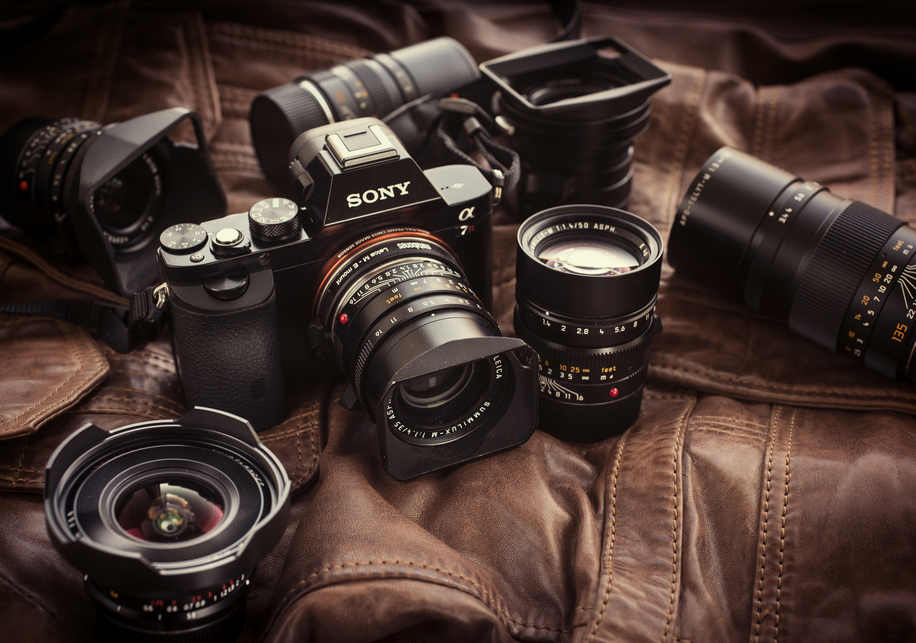
Whatever you think about the Sony A7 and A7r, these full-frame mirrorless cameras have caused something of a sensation and a degree of polarisation. The Leica world is agog and the forums have been buzzing with heated debate between those keen to try out their lenses on the Sonys and others who stick to the Leica-lenses-are-only-for-Leicas catechism.
One thread I started on the Leica l-forum, which was then merged with others on the same subject, has attracted over 4,000 posts and 218,000 views (at the time of writing). Some views have become extreme and there has been a great deal of misinformation, mostly from people do not own one of the Sonys. If you have the odd week to spare, it is worth a browse.

The essential problem is that the Leica M is tuned to perform perfectly with Leica lenses, both modern and legacy. Owners of coded lenses from the past ten years can simply attach an optic and fire away. Older, non-coded Leica lenses and those from third-party manufacturers require manual setting in the lens menu but it is almost always possible to choose a likely match even if a particular lens is not listed.
The Sony, on the other hand, is tuned to complement the new range of Zeiss FE (Full-frame E-mount) autofocus lenses which were launched alongside the mirrorless body. Sony, unlike Fuji with its third-party-lens menus in the X series, has made no attempt to accommodate third-party lenses. The outcome is that aberrations are possible and post-processing adjustments are often necessary for optimum results. That said, I have noticed few problems, especially with the Leica 35mm Summilux FLE which I have been using extensively. As a tool, I like the A7r and it has turned in some great shots. I appreciate its light weight, the outstanding integral viewfinder and the built-in grip.
Other commentators have done some serious testing with a range of M-mount lenses from Leica, Voigtländer and Zeiss. Tom Grill has contributed a detailed article for Leica Rumors in which he compares a representative range of lenses from 12mm to 135mm on both the Leica M and Sony A7r. There is a wealth of knowledge building up now that the Sonys have been around for a month or two and it is well worth reading Tom’s article before you rush out to buy an A7 to use with your M-mount lenses:
My main purpose in this experiment was to determine if the A7r could serve as a higher resolution substitute, or act as an extra body for a Leica M system. In the end I concluded that the results, while marginally better from the higher res A7r sensor, were not enough to justify my using this camera instead of my Leica M 240. The Leica worked better and with considerably less post-processing hassle using its native lenses — all of which tended to negate any benefits the larger 36MP A7r sensor might have. If I had to acquire a less expensive spare body to go with a Leica M, I think I would opt for the features of the A7 over the A7r and pocket the $600 price difference.
Tom, incidentally, is the man responsible for the wonderful Classic Cameras 2014 calendar which I featured last month.
I bow to his conclusion. I have already made up my mind that the Sony is not a straight alternative to a Leica M. The M performs better with Leica lenses as you could expect. But this does not mean that the Sony has no place. It is one-third the cost of the M and performs well enough with many Leica lenses to make it a useful additional camera. In particular, owners of the Monochrom or an older M8/M9 might well consider the Sony as a supplement or as a stop-gap while saving up for an M240. And, of course, we should not forget that Sony has it within its gift to update the firmware by offering tailoring options third-party lenses, particularly Leica glass. In a year’s time the verdict on the Sony could be different.
MORE READING
Read more camera reviews by Macfilos
Sony firmware update wish list
A couple of weeks with the A7 and Leica lenses
